Do-it-yourself kitchen curtains are a good idea for transforming a room. Even if your knowledge of sewing is limited to school home economics lessons, our article will help you create beautiful curtains that will become a real decoration of the kitchen.
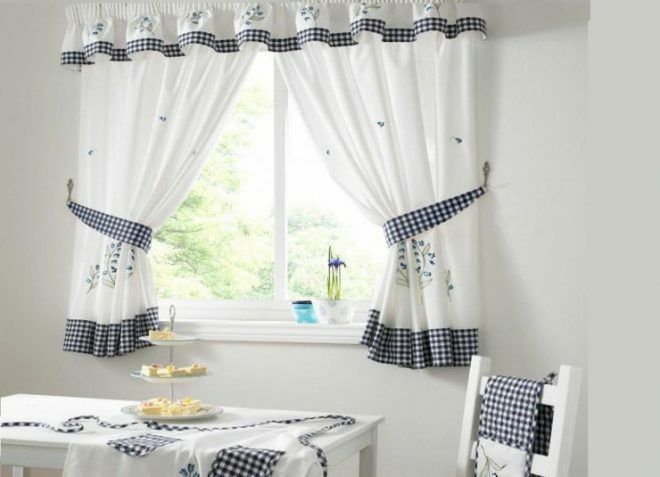
Preliminary preparation
The specifics of the premises presuppose some rules. More often they use short curtains (up to the windowsill), since long ones will interfere. If you do decide on floor-length curtains, clamps or clamps are required for them. Otherwise, with an open window and a nearby stove turned on, a fire may occur.
Attention! Earned on our website kitchen designer. You can familiarize yourself with it and design your dream kitchen for free! May also come in handy wardrobes designer.
Choose material that does not show grease and soot stains. Curtains in the kitchen will have to be washed often, and expensive and heavy curtains will soon lose their appearance.
Today, so-called blended fabrics (with a high content of synthetic fibers) are popular. They wash well, do not fade and keep their shape remarkably.
Always iron the fabric, especially thick fabric, before cutting. Otherwise, when assembling a structure, this is fraught with distortions (especially where an indirect cut is assumed) and an ugly appearance of the product.
You will need:
- main fabric;
- lining (in some models);
- curtain tapes, weights, slats (for Roman and Austrian curtains);
- a sewing machine or tape for seams;
- iron, scissors;
- additional elements (cords, rings);
- threads, pins, chalk, centimeter.
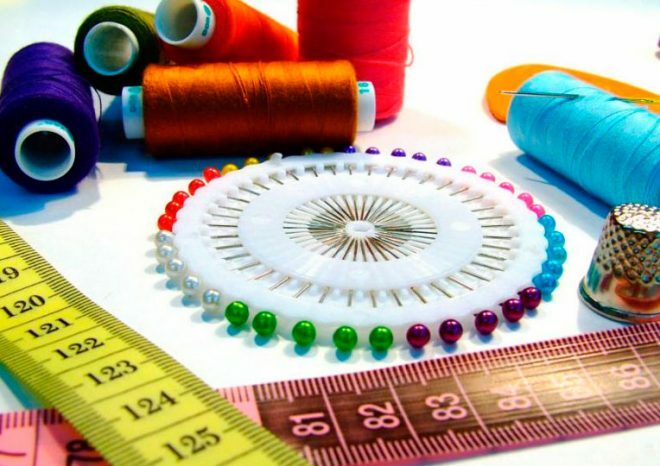
Calculation of the amount of materials
The width of the product is never completely identical to the window. It is often measured along the length of the cornice and always leave a distance for seam allowances of several centimeters.
If you are sewing on the top with a curtain tape for hooks (gathering tape), then it is the narrow one that is used in models without exquisite draperies. The standard width of the narrow tape is 4-6 cm. Consider this distance when folding the top edge so you don't have to do the job twice.
Calculate the gathering factor of the curtain tape, which is also suitable for the overall pattern. It is 1: 1.5-3 m. That is, for each meter of the window opening, you should have from one and a half to 3 meters of fabric. And the more folds you have on the curtain, the closer the footage should approach the last number.
When soft folds are assumed, they cannot be shorter than half the curtain's width. Keep in mind, however, that a large number of creases make it difficult to care for them in humid, steamy and fat-rich kitchens.
Models for inexperienced tailors
Do-it-yourself curtains for the kitchen are not needed for some simple specimens. Cutting is carried out directly on the fabric, based on measurements.
Arched curtain
One of the most common options for how to sew curtains for the kitchen with your own hands quickly and easily is an arched curtain. It fits all kitchen sizes and is cut from a single piece with a small cutout in the center. The ends of the curtains usually touch the windowsill, but can hang like a lambrequin from the ceiling.
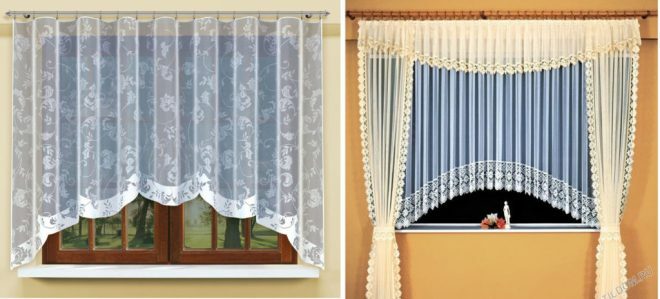
This model is also called "cat's house" for a rustic and cozy look. Country or Russian style, which is fashionable today, suggests such curtains, allowing you to contemplate the windowsill in all its glory. Absolutely nothing prevents access to the window. But with an abundance of sunlight, this turns into a disadvantage. And in this case, blinds or roller blinds are additionally attached to the window.
Such a curtain can be flat or fall into beautiful masonry. The simplicity of the cut is offset by the bright decor below. Fringe, all kinds of ruffles and lace will make the most simple and monochromatic fabric elegant.
Curtains "cafe"
They fit into almost any interior, making it incredibly cozy and lightweight. See do-it-yourself kitchen curtains photos and how organic they look in country style or provence.
The curtains are straight curtains on a strip (tube, round cornice, string), fixed in the middle of the window or slightly below. They are also called short. They fit any window opening (and even an arched one).
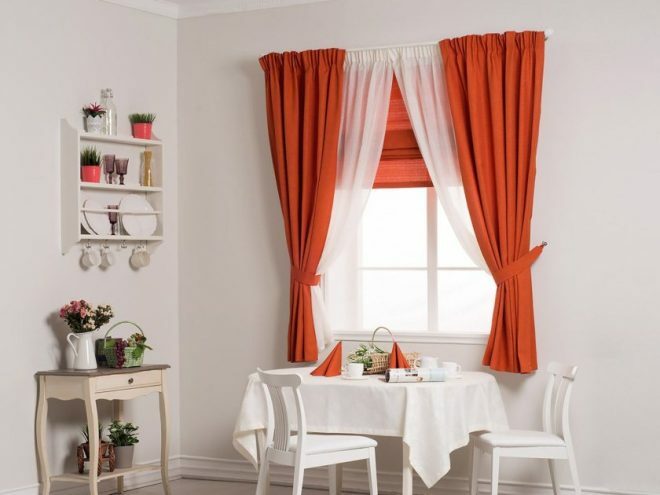
Sewing curtains is also quite simple. Heavy and dense fabrics are not used, preference is given to bright and weightless ones. Quite little fabric is used for sewing and you can even use small leftovers. A decorative lambrequin is sewn on top or bottom and the unpretentious canvas becomes very elegant.
Curtains are attached to the cornice in all sorts of ways (loops, strings, hooks, eyelets or drawstring). Decorate the bottom with hooks, tassels, beads or scallops.
Drawstring curtains
In this case, straight curtains get their zest in the form strings. They are made of basic or contrasting fabric. They come in all kinds of sizes, widths and lengths, the main thing is to withstand the weight of the curtains.
Distinguish between long and narrow strings (like noodles hanging in long strands) or short and draped (looking like ordinary bows). The latter should not be at a great distance from the canvas, but they look much better near the curtain itself.
The long ends can fall into the curtain in frivolous ribbons, or be wrapped around the curtain rod. The curtains are mounted on a curtain rod or on rings. But in any case, they move along the pipe very easily and effortlessly.
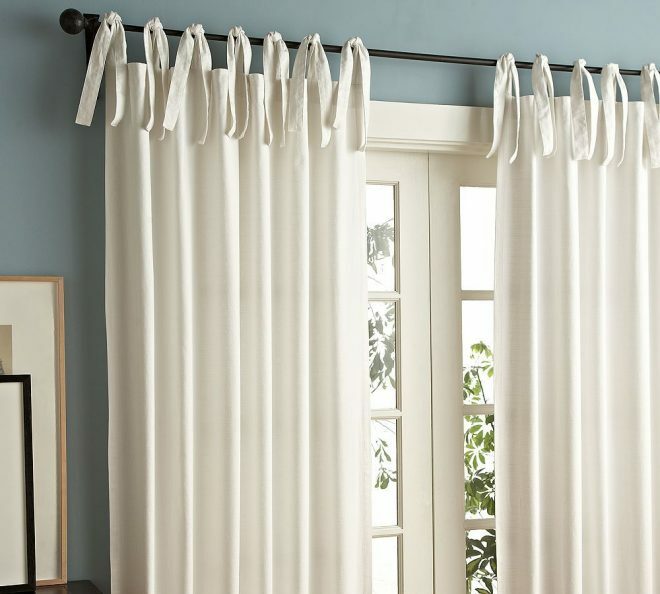
Tied curtains are made from almost any fabric. But soft and draped look best: taffeta, jacquard, mixed fabrics. When making them, you should adhere to some rules - for soft folds, the width of the curtain should be one and a half more than the width of the cornice or window.
The narrower the ties, the closer they should be to each other (the best option is 10-15 cm). But wide tapes can be attached at a distance of 15-20 cm.
With the help of long ties, it is very good to regulate the main fabric. Therefore, today your curtain can almost touch the floor, revealing more light; and after a week, be raised to the ceiling itself, allowing the wind to create a draft.
Austrian curtains
These curtains are elegant, yet solemn and austere. They will look good both in a business office with a classic ambiance and in a restaurant. Today they can also be found in the kitchen. The main requirement for the fabric is that it should be well draped, because on dense and heavy curtains, not folds are formed, but creases. Therefore, use organza, silk, taffeta, polyester or chintz.
Curtains are located both on one window (narrow or wide) and on the entire width of the wall. They have 2 positions: lowered and raised. In the last position, the Austrian curtains form volumetric waves, which are also called scallops.
The cords fixed in a loop or ring create a uniform fold and this design looks very organic. Flounces, ruffles, fringes or tassels are used as additional decor.
Before starting work, measure the height of the window and multiply by 2, plus folds of 3-5 cm (depending on the structure of the material) at the top and bottom. The pattern is an elongated rectangle, divided by a curtain tape (or a special tape with rings). Today on the market there are ready-made ribbons with fixed rings suitable for Roman and Austrian curtains. Each section has a width (step) of 30-50 cm.
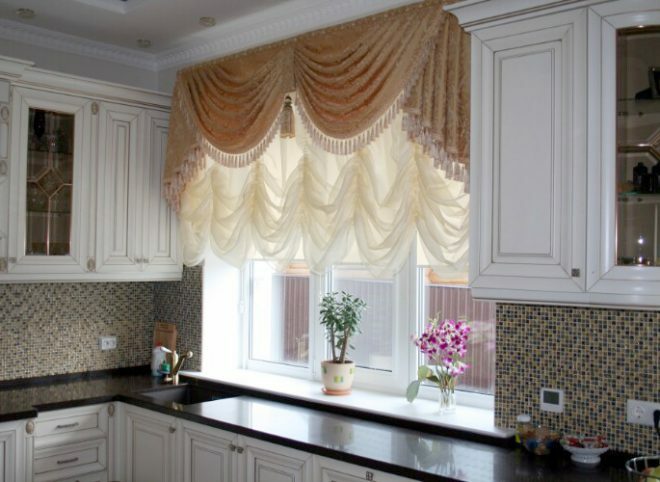
How to sew Austrian curtains for the kitchen yourself
- Cut a rectangle out of the fabric to fit the width of the window.
- Use chalk to mark the areas for the curtain tape and folds. This is done using a template or directly onto the fabric.
- Fold the fabric along the sides on a typewriter, or with a special glue spider web and an iron.
- Using a basting stitch, use your hands to attach the tape with rings to the bottom of the canvas. Try to assemble the entire structure.
- Use a typewriter to stitch the tape to the curtain and secure through the clips.
- Fold the top of the curtain 5 cm (standard curtain tape width) and secure the fabric in the same way (with glue or seams). Stitch the curtain fabric for hanging onto the curtain rod.
- Optionally, you can decorate the bottom with decorative elements (tassels, fringes).
Roman models
Another popular shade-like curtain. A little canvas goes to it, the pattern is done exactly according to the window, and mechanisms for raising it can be done with your own hands or bought. The operating principle of a Roman shade is reminiscent of a sail. And they are attached both above the window opening and inside it.
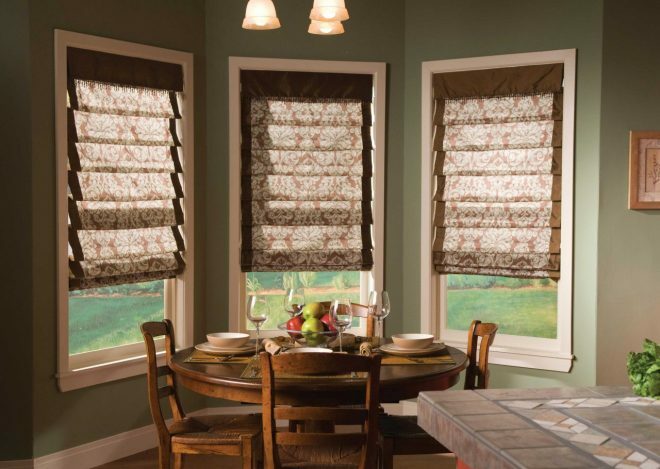
How to sew such curtains in the kitchen with your own hands
- Measure the window opening. Make seam allowances on the fabric (up to 5 cm on the sides, up to 25 cm at the top and bottom).
- Mark with chalk the future folds (steps) and the places for the rings. They range from 20-30 cm. There are tables on the Internet on how to arrange folds, depending on the size of the window, so that the curtain looks as impressive as possible.
- Form a frame: draw places for lamellas on the fabric, sew on a drawstring and rings.
- Secure well with nails or staples on the top of the curtain rod of the ring. They are the ones who experience the greatest workload. Velcro (or magnetic tape) can be used with lightweight fabrics and on a small window. Then the structure can be placed inside the window and easily detached for ventilation or cleaning.
- Thread the working string through the bottom of the curtain and through the rest of the rings to the top. Slide them out through the top clip to the side that is comfortable for you.
Lambrequins in the kitchen
Original curtains for the kitchen with your own hands are obtained when you use such a decorative element as a lambrequin (or bando). It is a draped fabric in various positions.
It can be used in place of overhead curtains or combined with other classic options. There are soft, hard or combined lambrequins. The first are the simplest ones and the question is: "How to sew kitchen curtains with your own hands?" with their help it is the easiest to solve.
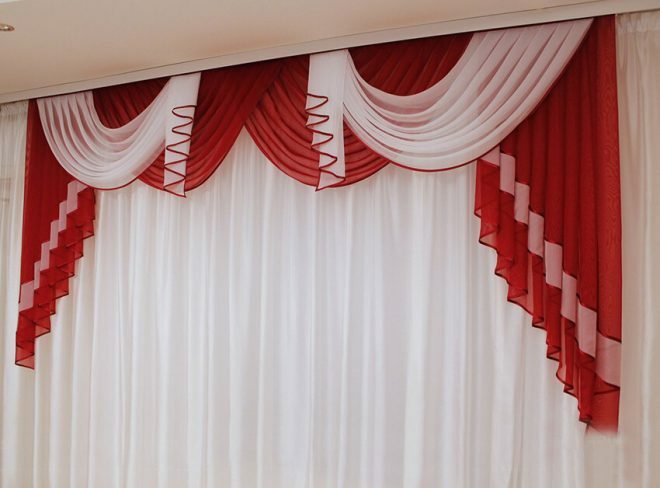
A soft lambrequin is made from lightweight fabrics. They are draped in a special way:
- The simplest one is the fold, when the fabric is thrown over the baguette, and the folds are straightened in an artistic way and fixed. In this case, you do not need to use patterns and a sewing machine.
- A bell is a fabric gathered by a wave, fixed at the height of the cornice. It can be straight or with an asymmetrical edge.
- Swag is a semicircle drapery, the most beautiful and difficult to work with. When cutting it, the most important thing is to maintain an even line of folds.
How to sew curtains for the kitchen from swags
- The swag is cut from fabric at an angle of 45 degrees. This significantly increases the consumption of fabric, but the drapery is the most beautiful. Several elements crossed among themselves look most impressive.
- When measuring a swag, keep in mind that it cannot be more than 1/6 of the window length. Here you can not do without a pattern, in which, first of all, the center should be designated.
- Then cut open the fabric. Press the bottom seam allowances and form a swag with gathered sides and a free center.
- Attach the curtain tape. Install the clamps between the swags and hang them on the lambrequin on the cornice hooks.
average rating 0 / 5. Number of ratings: 0
No ratings yet. Be the first to rate.


